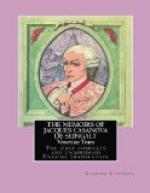The bull fights were finer at Saragossa than at Madrid—that is to say, they were deadlier; and the chief interest of this barbarous spectacle lies in the shedding of blood. The Marquis de las Moras and Colonel Royas gave me some excellent dinners. The marquis was one of the pleasantest men I met in Spain; he died very young two years after.
The Church of Nuestra Senora del Pilar is situated on the ramparts of the town, and the Aragonese fondly believe this portion of the town defences to be impregnable.
I had promised Donna Pelliccia to go and see her at Valentia, and on my way I saw the ancient town of Saguntum on a hill at some little distance. There was a priest travelling with me and I told him and the driver (who preferred his mules to all the antiquities in the world) that I should like to go and see the town. How the muleteer and the priest objected to this proposal!
“There are only ruins there, senor.”
“That’s just what I want to see.”
“We shall never get to Valentia to-night.”
“Here’s a crown; we shall get there to-morrow.”
The crown settled everything, and the man exclaimed,
“Valga me Dios, es un hombre de buen!” (So help me God, this is an honest man!) A subject of his Catholic majesty knows no heartier praise than this.
I saw the massive walls still standing and in good condition, and yet they were built during the second Punic War. I saw on two of the gateways inscriptions which to me were meaningless, but which Seguier, the old friend of the Marquis Maffei, could no doubt have deciphered.
The sight of this monument to the courage of an ancient race, who preferred to perish in the flames rather than surrender, excited my awe and admiration. The priest laughed at me, and I am sure he would not have purchased this venerable city of the dead if he could have done so by saying a mass. The very name has perished; instead of Saguntum it is called Murviedro from the Latin ‘muri veteres’ (old walls); but Time that destroys marble and brass destroys also the very memory of what has been.
“This place,” said the priest, “is always called Murviedro.”
“It is ridiculous to do so,” I replied; “common sense forbids us calling a thing old which was once young enough. That’s as if you would tell me that New Castille is really new.”
“Well, Old Castille is more ancient than New Castille.”




